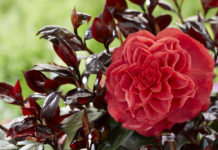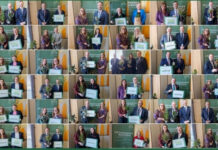
Bees and other pollinating insects will benefit from a new guide produced by the RHS. Following last year’s list of pollinator-friendly cultivated plants, the charity is launching a list of wildflowers useful as nectar or pollen sources for insects. Many of these native plants can be used in cultivated areas.

Bees and other pollinating insects will benefit from a new guide produced by the RHS. Following last year’s list of pollinator-friendly cultivated plants, the charity is launching a list of wildflowers useful as nectar or pollen sources for insects. Many of these native plants can be used in cultivated areas.
In addition to the new guide, which contains more than 200 plants, the cultivated garden plants list has also been extended and now includes more than 400 plants.
Over the past 50 years, certain insect groups, such as butterflies and bees, have been dwindling, partly due to the decline of wildflowers in the countryside. Gardens, with their variety of plants that are in flower throughout the year, are an important habitat to help insects.
‘Gardens are now increasingly recognised as important environments for maintaining biodiversity,’ said RHS director of horticulture Jim Gardiner. ‘By planting a broad diversity of plants, gardeners can do a lot to encourage pollinating insects which, in turn, will bring other forms of wildlife into their gardens.’
The RHS ‘Perfect for Pollinators’ initiative has attracted a huge amount of interest, with garden centres seeing an increase in demand for pollinator-friendly plants indicated by the logo.
For help, consult the RHS ‘Perfect for Pollinators’ lists and select plants from there. Choose planting schemes that have plants that will provide flowers throughout the seasons. Avoid plants that have double or multi-petal flowers as the extra petals often replace the pollen-producing parts of the flower and may make the nectar inaccessible.
Source: Royal Horticultural Society – Pollinators to benefit IN NEW RHS GUIDE






